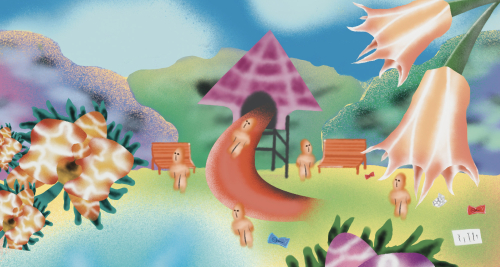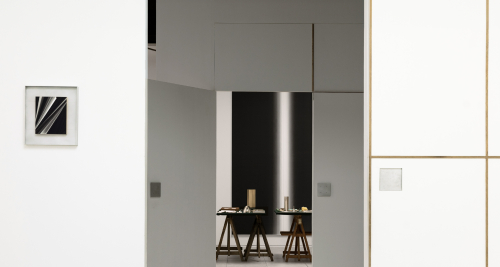Staging Desire and its Architecture of Dialogue
The terrains that inhibit an exhibition are expected to determine a viewer’s motion, endowing us with a clarity in experience. We are actors upon the entry into its space, the curation becomes direction; informing our line of sight: where to look and when to avert. One can liken exhibition to theatre, or maybe enmesh them. Isn’t art ultimately a form of performance itself? This question is explored through Komunitas Salihara’s Staging Desire, as abstraction takes the centre stage and places identity/memory into play.
“It is a deliberate choice to call this a dialogue, rather than a collaboration,” Salihara’s Gallery Manager Ibrahim Soetomo mentioned in our conversation. The exhibition meets two artists Imam Sucahyo and Nindityo Adipurnomo, as they explore desire as a guide for their artistic practices. This was initiated by Nindityo’s discovery of Imam’s work through Instagram, and eventual visit to Tubang. Nindityo was interested in the materials of Imam’s Wayang, which was created from fragments found across Tubang— an embodiment of Imam’s memories and reflections, his relation to its place. Nindityo himself is interested in the material form as an articulation of his or a collective “identity”, explored through his sculptural work. Nindityo’s sculptures are calculated and structured in form and a direct contrast of Imam’s tending to fragments but their interests remain as they think through environment, meaning and society. The meeting of the two makers signified their parallels in practice, and eventually led to the exhibition’s making.

“My role mostly was to facilitate the dialogue and interaction between them,” Zarani Risjad says, Staging Desire’s curator and co-founder of Baseline Studio. “It was interesting to take part in their collaboration and to see them work through the different ontologies that they move from, which came into fruition through the meetings of their practice(s).” She continued. Their differences in form converge throughout the exhibition space, and in effect, births conversations amongst the myriad of materials. Perhaps we’ve read the space as a design to showcase the contrasting practice amongst the artists; in here, we witness a distance in their dialogue as their differences can erupt or emerge into conflict or perhaps if you follow the circularity of the gallery’s site, the differences coalesce and brings an effect of traversing two worlds.

Nonetheless, the meeting point amongst Imam and Nindityo culminated— and embodied— in the exhibition’s centrepiece that transported ruins of a house in Tuban, which was adorned by Imam’s Wayangs and Nindityo’s sculptures. The dialogue amongst the pieces are abstract, as there are no narratives or scripts to bind them. It emerges from their placement and perhaps the viewer is free to decide who converses amongst each other and who remains in their monologues. Above the house, a moon hangs as a mimicry to the layout of a backdrop in its staging. And inside the house, there is a film that plays inside a Television, showcasing the enlivening of the Wayang form against the landscape of Tuban. “A house is a significant element for both artists, as for Imam it evokes memory and for Nindityo it triggers a question of embodiment and identity, asking what does the house signify about one’s relation to place? Its placement in the centre is to also show how home is a meeting point for their (artistic) exploration.” Ibrahim explained.
What Staging Desire makes clear is that an exhibition can be a site, script and stage—where identity and memory are not merely displayed, but enlivened through encounter. In this way, the exhibition becomes not just a stage for objects, but a space for multiplicities to speak, clash, and cohere however momentarily.
Staging Desire is a collaborative exhibition between Baseline Studio and Komunitas Salihara, open to the public from 14 June to 27 July 2025, Tuesdays to Sundays, 10 AM–6 PM.
















